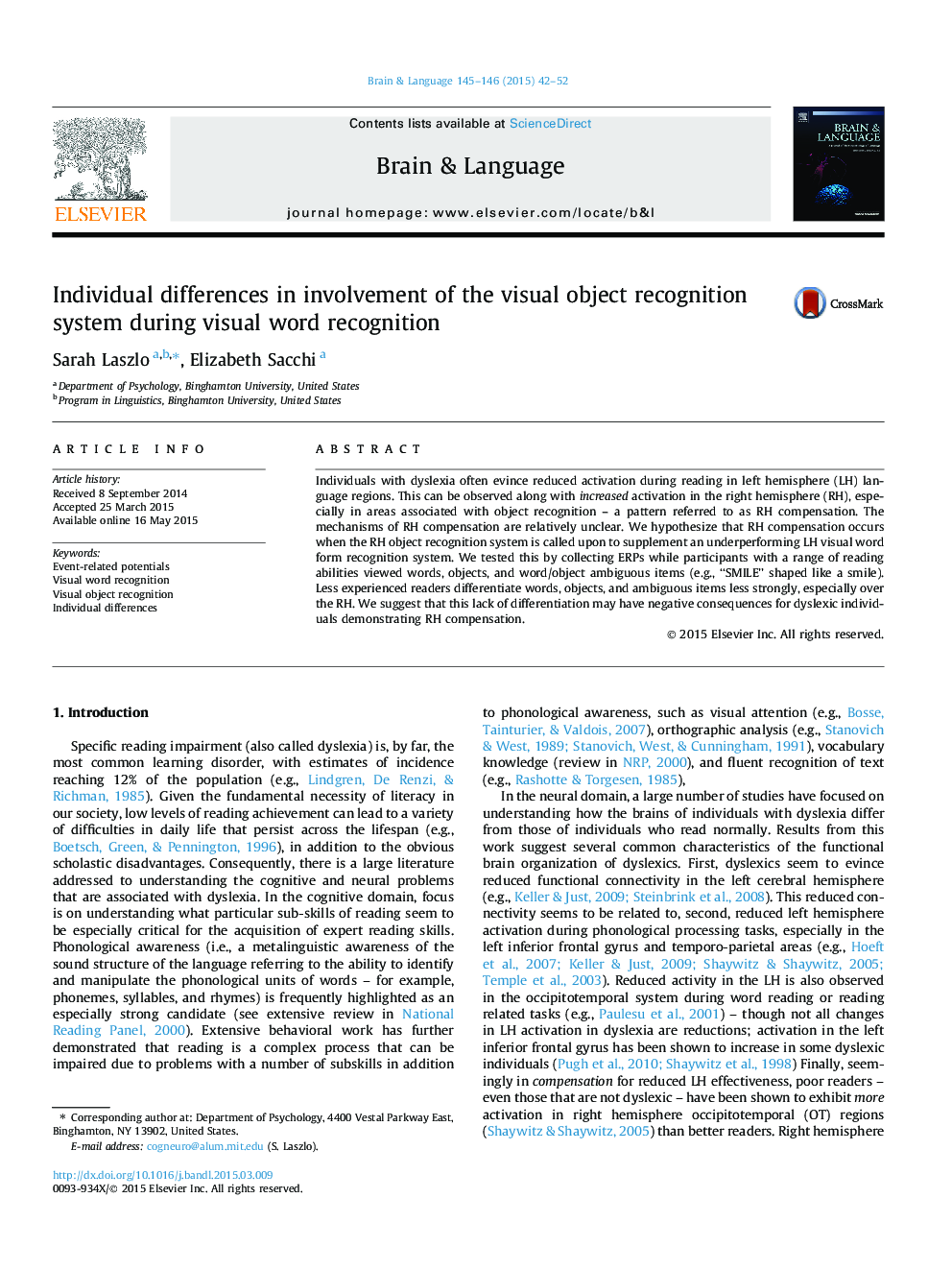| Article ID | Journal | Published Year | Pages | File Type |
|---|---|---|---|---|
| 7284295 | Brain and Language | 2015 | 11 Pages |
Abstract
Individuals with dyslexia often evince reduced activation during reading in left hemisphere (LH) language regions. This can be observed along with increased activation in the right hemisphere (RH), especially in areas associated with object recognition - a pattern referred to as RH compensation. The mechanisms of RH compensation are relatively unclear. We hypothesize that RH compensation occurs when the RH object recognition system is called upon to supplement an underperforming LH visual word form recognition system. We tested this by collecting ERPs while participants with a range of reading abilities viewed words, objects, and word/object ambiguous items (e.g., “SMILE” shaped like a smile). Less experienced readers differentiate words, objects, and ambiguous items less strongly, especially over the RH. We suggest that this lack of differentiation may have negative consequences for dyslexic individuals demonstrating RH compensation.
Keywords
Related Topics
Life Sciences
Neuroscience
Biological Psychiatry
Authors
Sarah Laszlo, Elizabeth Sacchi,
